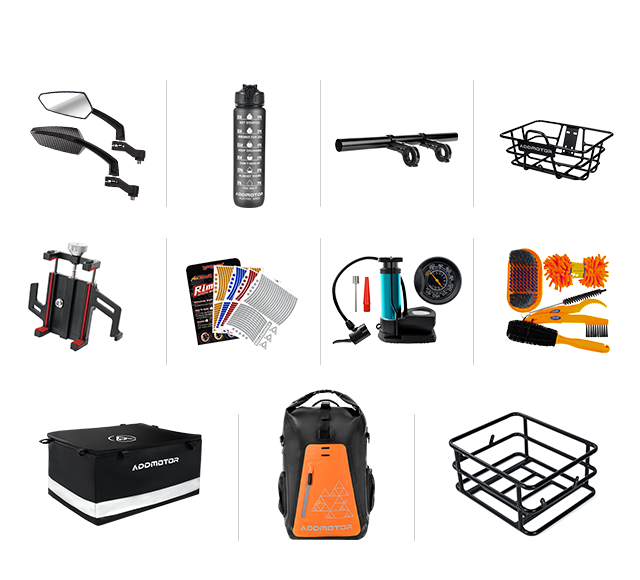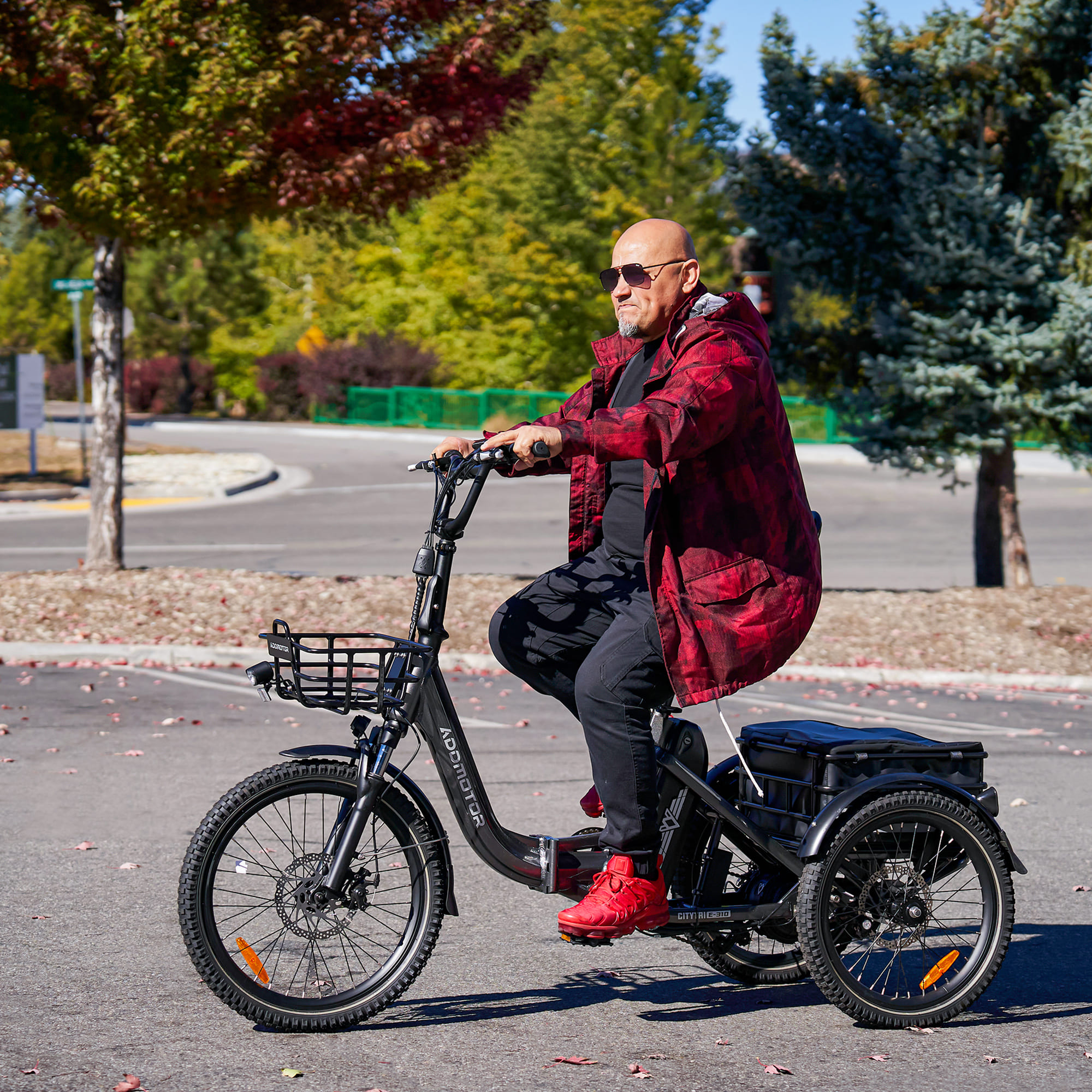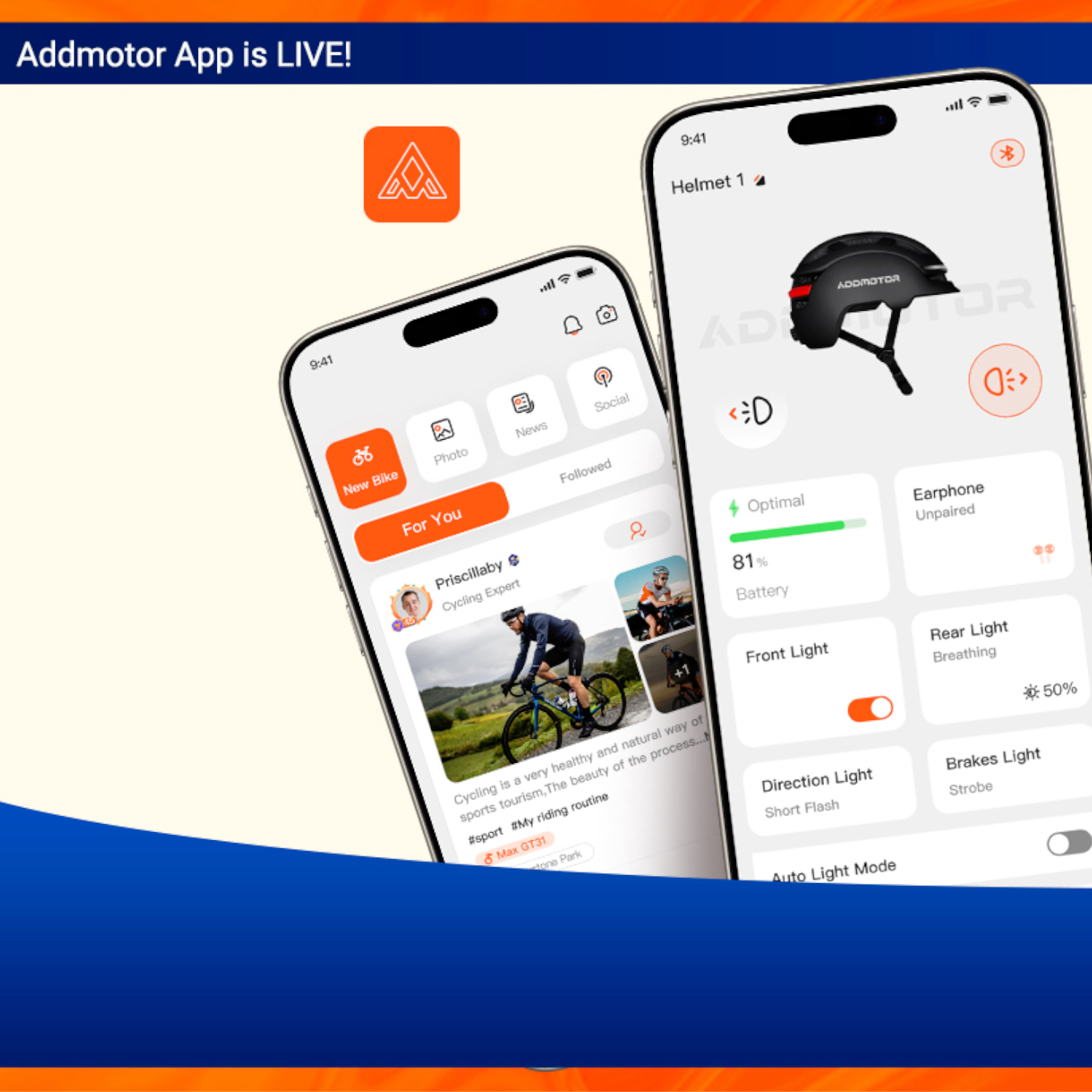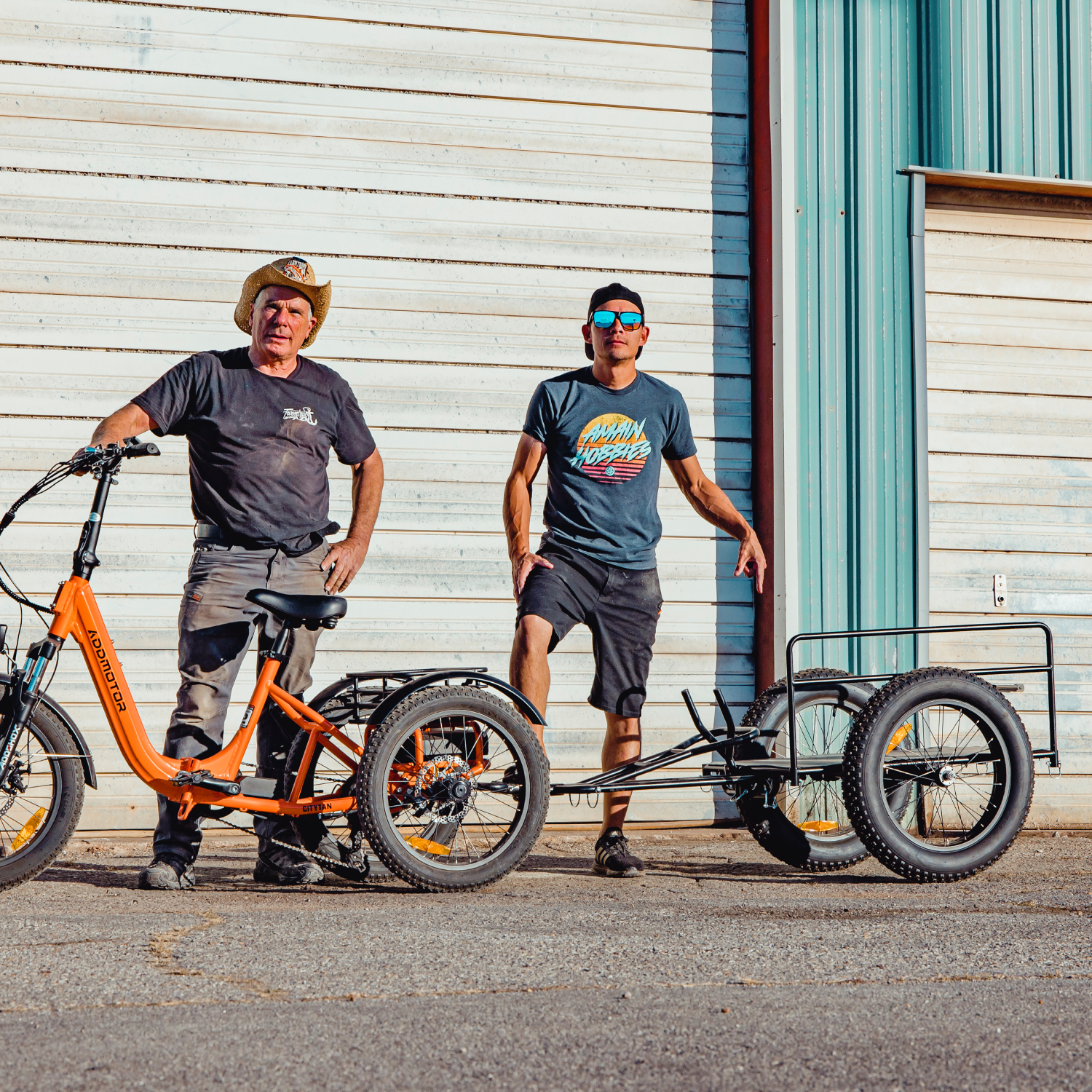ADDTECH | Best 18650 Li-ion Battery Brand-3500mAh
By Addmotor | 30 January 2024 | 0 Comments
In a previous article, we reviewed the 18650 3200mAh battery cells. However, there are also higher capacity 18650 cells available, such as the 3500mAh ones.
In this article, we will compare the three major brands that produce 3500mAh 18650 cells: Samsung INR 18650-35E, LG INR18650MJ1, and Panasonic’s NCR18650GA. At the end, you will know which one is the BEST 3500mAh Li-Ion 18650 cell for your needs.
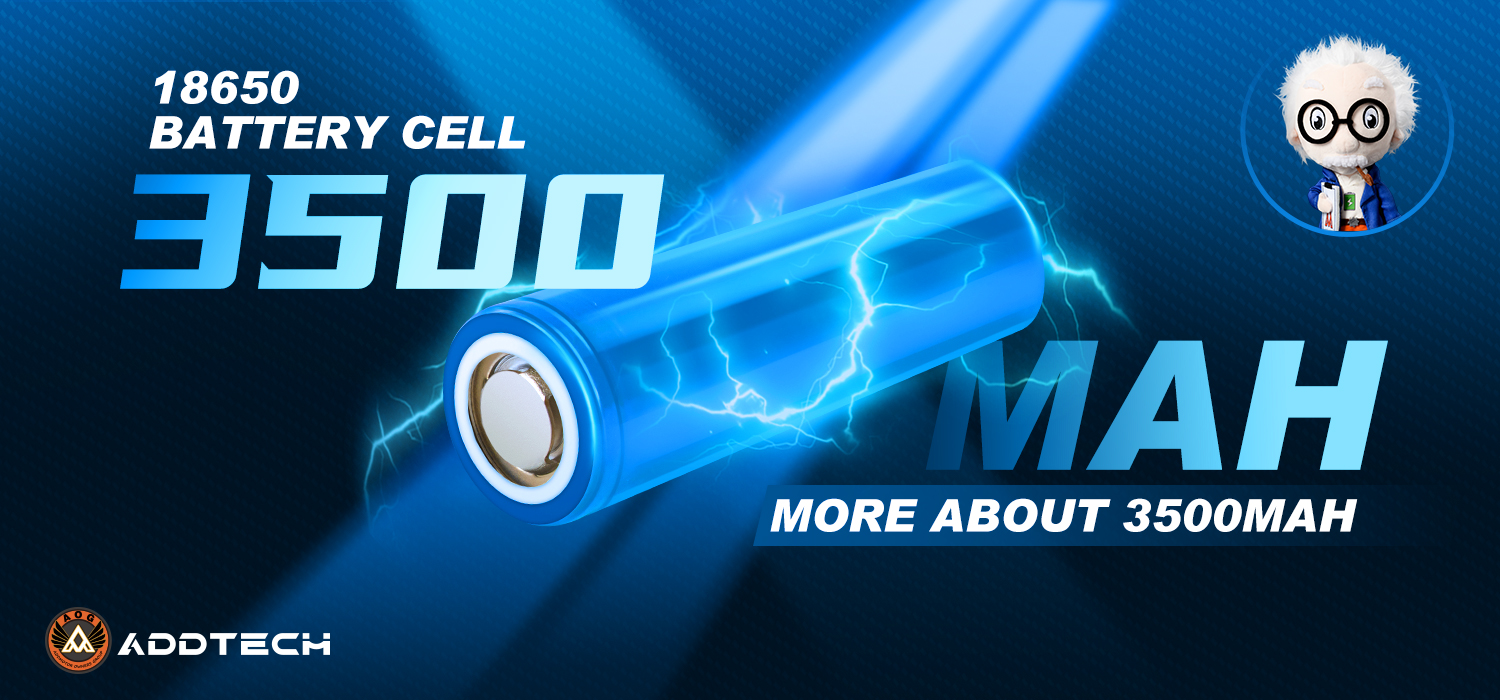
In this comparison, we can see that the Panasonic cell may be the lightest, coming in at 48g max. Meanwhile, the Samsung cell is heavier at 50g max.
So the more cells you have in your pack, the better it is to rely on lighter cells. For instance, the 48g cells in an 80-cell pack would weigh around 3.84 kg or 8.46lbs. Meanwhile, the 50g cells would amount to 4.0 kg or 8.8lbs.
In this comparison, the LG and Panasonic cells have a maximum discharge current (CDR) of 10A. In the case of the Samsung cell, it has an 8A CDR. The CDR is slightly lower than the average. Therefore, the higher continuous discharge of LG and Panasonic cells does make them ideal for high-torque applications on eBikes and electric trikes.
Internal resistance might not seem like a worthy spec. However, it’s a great indicator of a cell’s efficiency and safety. LG cells have the highest internal resistance and they generate more heat and lose more power during charging and discharging.
So when trying to compare Li-Ion 18650 cells, it’s important to go with the ones with a lower resistance. This improves their thermal performance and minimizes energy wastage.
On the flip side, if it’s too cold outside, the electrolyte might freeze over. This increases the internal resistance and also reduces the charge and lifespan of the cells.
Therefore, it’s important to stick within the recommended temperature limits for these Li-Ion cells. In this comparison, the LG cell has a charging temperature range of 0℃-45℃ and a more liberal range of -20℃ - 60℃.
Meanwhile, the Samsung cell has the same charge range with a discharge range of -10℃ to 60℃. The Panasonic cell has a charge range of 0℃ to 45℃, with a discharge range of -20℃ to 60℃.
Therefore, let’s start by discussing the most important aspects to look for when picking out an eBike battery pack or individual cells.
Unlike other rebranders or manufacturers, these 3 brands always follow strict testing procedures, guarantee battery performance listed on the spec sheet, and don’t make false promises.
So if you’re looking to purchase a battery pack for an eBike or trike, don’t forget to note down the manufacturer. Avoid packs that don’t list the manufacturer and try to stick to the big-name manufacturers mentioned above.
Also, avoid brands that give out unrealistic specs. Usually, if they boast capacities higher than 3600mAh or continuous discharge rates (CDRs) higher than 30A, chances are they’re lying.
Higher battery capacity is always a plus. However, there are certain tradeoffs. Also, at the time of writing this article, the largest battery capacity viable for eBike 18650 cells, is 3500mAh. Anything higher than that could pose serious safety issues or a noticeable decrease in CDR. For eBikes, this can result in decreased power, especially in high-torque, high-speed situations.
- Short Circuit Protection
- Overvoltage/Overcurrent protection
- Charge Protection
- Temperature Protection
Fortunately, most high-end manufacturers implement these safety features into the individual cells themselves. On top of that, the BMS and eBike controller provide additional layers of protection.
If you’re comparing 18650 cells, make sure to check the spec sheet for the safety criteria. Ensure the tests were carried out under the UL standard and that the results didn’t indicate any known issues.
However, we believe the Samsung INR18650-35E is a better choice, at least for e-bikes and e-trikes. The Samsung battery has the lowest internal resistance and is more stable in charging and discharging. On top of that, its 8A continuous discharge rate isn't bad for e-bikes.
Typically, you want to look for better thermal performance and a higher CDR for eBikes. Charging rates and currents can be lower as it implies the cells don’t overheat or lead to a decreased life cycle.
In this article, we compared LG, Samsung, and Panasonic 3500mAh cells. We didn’t have any noticeable outliers but prefer to stick with Samsung as they seem like the safer bet.
In this article, we will compare the three major brands that produce 3500mAh 18650 cells: Samsung INR 18650-35E, LG INR18650MJ1, and Panasonic’s NCR18650GA. At the end, you will know which one is the BEST 3500mAh Li-Ion 18650 cell for your needs.

Comparing the Best 3500mAh Battery Cells
| Parameters | LG (INR18650MJ1) | Samsung (INR18650-35E) | Panasonic (NCR18650GA) |
| Weight (max.) | 49.0 g | 50 g | 48.0 g |
| Charging Voltage | 4.2V | 4.2V | 4.2V |
| Charging Current | 1700mA | 1,700mA | 1675mA |
| Charging Time | 3 hours | 4 hours | 4.5 hours |
| Max. Charge Current | 3400mA | 2,000mA | 2,000mA |
| Max. Discharge Current (continuous discharge) |
10A | 8A |
10A |
| Internal Resistance | ≤ 40 mΩ | ≤ 35mΩ | ≤ 38mΩ |
| Operating Temperature | Charge: 0 ~ 45°C Discharge: -20 ~ 60°C |
Charge: 0 ~ 45°C Discharge: -10 ~ 60°C |
Charge: 10 ~ 45°C Discharge: -20 ~ 60°C |
♦ Weight Comparison
The difference in the weight of their individual cells is not significant. However, for the same weight, the higher the capacity of the battery, the more advanced the technology required.In this comparison, we can see that the Panasonic cell may be the lightest, coming in at 48g max. Meanwhile, the Samsung cell is heavier at 50g max.
So the more cells you have in your pack, the better it is to rely on lighter cells. For instance, the 48g cells in an 80-cell pack would weigh around 3.84 kg or 8.46lbs. Meanwhile, the 50g cells would amount to 4.0 kg or 8.8lbs.
♦ Charging Characteristics
We can see that the maximum charging current allowed for LG batteries is 3400mA, which is larger than Samsung's and Panasonic's, which means that LG can match chargers that allow for a larger charging current and the charging time required will be shorter (if with the same charge voltage, the end current, and the charge algorithm).♦ Discharging Characteristics
Discharge performance is another hugely important spec for a battery pack. This is because eBike motors can demand a large amount of current in a short burst of time. Therefore, cells reserved for eBikes should have significantly higher discharge currents and rates. Especially when compared against cells reserved for, say laptops and smaller devices.In this comparison, the LG and Panasonic cells have a maximum discharge current (CDR) of 10A. In the case of the Samsung cell, it has an 8A CDR. The CDR is slightly lower than the average. Therefore, the higher continuous discharge of LG and Panasonic cells does make them ideal for high-torque applications on eBikes and electric trikes.
♦ Internal Resistance
In this comparison, we can see that the internal resistance of these cells doesn’t vary a lot. The LG cell has a value of ≤ 40mΩ. Meanwhile, Samsung has the lowest at ≤ 35mΩ, with the Panasonic coming at ≤ 38mΩ.Internal resistance might not seem like a worthy spec. However, it’s a great indicator of a cell’s efficiency and safety. LG cells have the highest internal resistance and they generate more heat and lose more power during charging and discharging.
So when trying to compare Li-Ion 18650 cells, it’s important to go with the ones with a lower resistance. This improves their thermal performance and minimizes energy wastage.
♦ Operating Temperature Range
Temperature can dramatically impact the battery and your overall riding experience. If it’s too hot outside, your cells might suffer from thermal runaway. This can cause irreversible damage or even fires.On the flip side, if it’s too cold outside, the electrolyte might freeze over. This increases the internal resistance and also reduces the charge and lifespan of the cells.
Therefore, it’s important to stick within the recommended temperature limits for these Li-Ion cells. In this comparison, the LG cell has a charging temperature range of 0℃-45℃ and a more liberal range of -20℃ - 60℃.
Meanwhile, the Samsung cell has the same charge range with a discharge range of -10℃ to 60℃. The Panasonic cell has a charge range of 0℃ to 45℃, with a discharge range of -20℃ to 60℃.
Extra Tips on Picking the Best 3500mAh Cells for an eBike?
3500mAh Li-Ion cells can be very sensitive components that are heavily reliant on several factors. When it comes to comparing 3500mAh Li-Ion cells, it’s important to account for more than just nominal capacity and battery specs.Therefore, let’s start by discussing the most important aspects to look for when picking out an eBike battery pack or individual cells.
♦ Brand or Manufacturer
The Lithium-Ion brand or manufacturer is usually the first thing that experienced eBikers look for in a battery pack. In most cases, you can tell a lot about the battery pack’s performance by confirming the cell manufacturer or a rebrand that re-wrapped a battery taken from an original manufacturer.Unlike other rebranders or manufacturers, these 3 brands always follow strict testing procedures, guarantee battery performance listed on the spec sheet, and don’t make false promises.
So if you’re looking to purchase a battery pack for an eBike or trike, don’t forget to note down the manufacturer. Avoid packs that don’t list the manufacturer and try to stick to the big-name manufacturers mentioned above.
Also, avoid brands that give out unrealistic specs. Usually, if they boast capacities higher than 3600mAh or continuous discharge rates (CDRs) higher than 30A, chances are they’re lying.
♦ Capacity
Battery capacity is measured in mAh or even Wh. They usually give a pretty decent idea of a cell’s capabilities and how much range you can expect out of them.Higher battery capacity is always a plus. However, there are certain tradeoffs. Also, at the time of writing this article, the largest battery capacity viable for eBike 18650 cells, is 3500mAh. Anything higher than that could pose serious safety issues or a noticeable decrease in CDR. For eBikes, this can result in decreased power, especially in high-torque, high-speed situations.
♦ Safety Characteristics
Safety is another important consideration. In terms of eBikes, a few of the safety features you need to look out for are:- Short Circuit Protection
- Overvoltage/Overcurrent protection
- Charge Protection
- Temperature Protection
Fortunately, most high-end manufacturers implement these safety features into the individual cells themselves. On top of that, the BMS and eBike controller provide additional layers of protection.
If you’re comparing 18650 cells, make sure to check the spec sheet for the safety criteria. Ensure the tests were carried out under the UL standard and that the results didn’t indicate any known issues.
Who’s the Best Cell Manufacturer for eBikes?
Considering the above comparison, there’s not much of a difference between LG, Samsung, and Panasonic. All three manufacturers stick within the same limits with only minor differences.However, we believe the Samsung INR18650-35E is a better choice, at least for e-bikes and e-trikes. The Samsung battery has the lowest internal resistance and is more stable in charging and discharging. On top of that, its 8A continuous discharge rate isn't bad for e-bikes.
Conclusion
The charging and discharging characteristics, internal resistance, operating temperature, and cycle life can give a very detailed overview of how an 18650 cell operates.Typically, you want to look for better thermal performance and a higher CDR for eBikes. Charging rates and currents can be lower as it implies the cells don’t overheat or lead to a decreased life cycle.
In this article, we compared LG, Samsung, and Panasonic 3500mAh cells. We didn’t have any noticeable outliers but prefer to stick with Samsung as they seem like the safer bet.
Leave a Reply
Your email address will not be published.Required fields are marked. *
Latest Stories

